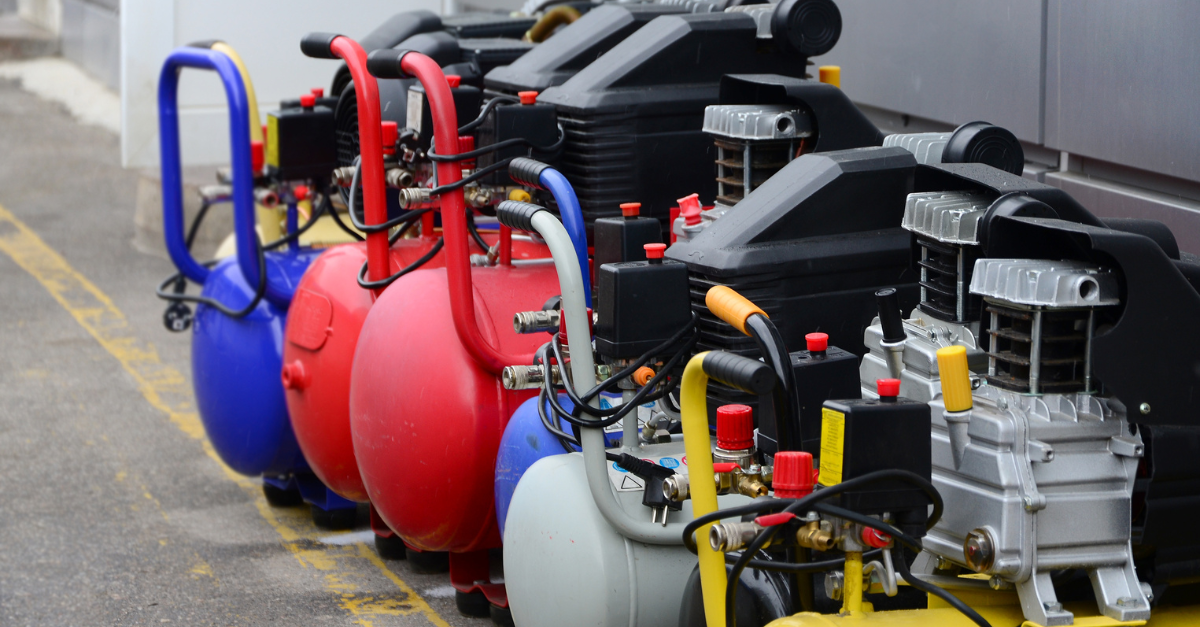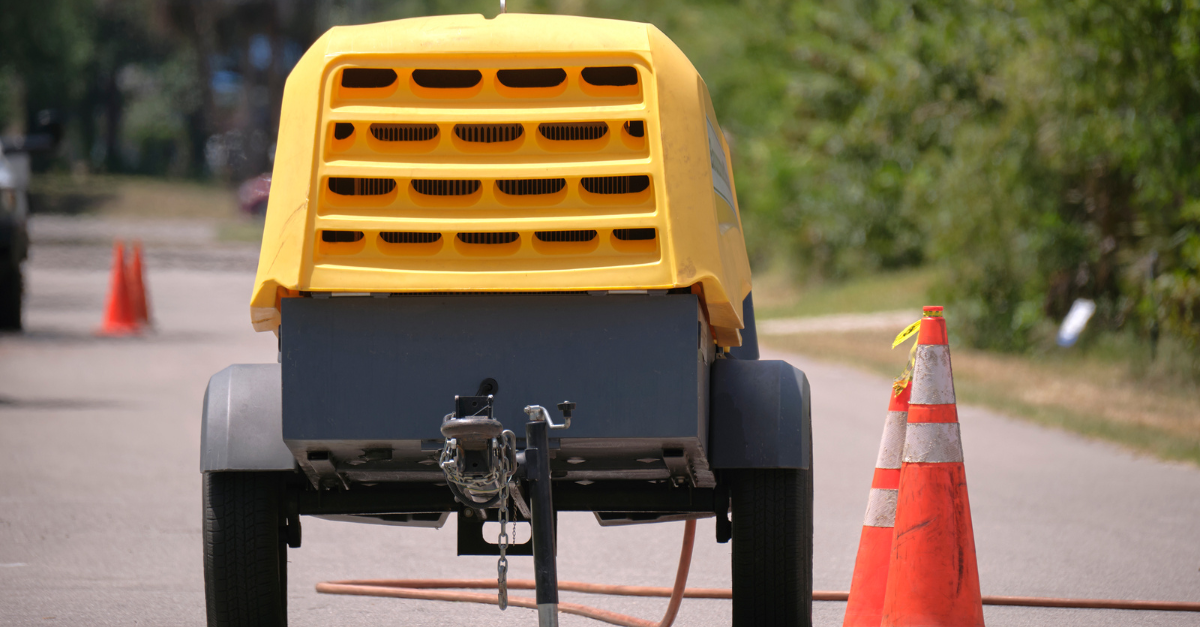In the world of asset management, there is a common blind spot that continues to cost businesses money, time, and peace of mind. While GPS tracking is widely adopted for vehicles and powered equipment, non-powered rental assets often fall through the cracks. These forgotten assets include trailers, generators, compressors, light towers, mobile HVAC units, and other high-value equipment that plays a critical role in industries like construction, disaster response, logistics, and event support.
Overlooking these assets is not just an operational inconvenience. It’s a strategic vulnerability.
Whether you’re in the rental business or a financial services firm that finances this type of equipment, ignoring the value of GPS tracking for non-powered assets creates significant risk. The consequences range from theft and loss to reduced utilization, customer disputes, and poor ROI. As the economy shifts and pressure increases to optimize every dollar, this oversight could be the difference between growth and decline.
The Blind Spot in Asset Visibility
Most rental and fleet operators have robust tracking systems in place for trucks and heavy machinery. These assets typically come with factory-installed GPS or telematics solutions. But non-powered assets do not have engines or power sources, which has led many companies to assume that tracking them is not feasible or worth the effort.
That assumption is no longer valid.
Battery-powered GPS tracking technology has advanced significantly. Devices now last multiple years on a single battery, require no external power source, and are small enough to be hidden discreetly. With affordable pricing and scalable deployment, the barriers to tracking these assets have all but disappeared.
So why does the gap still exist?
Because many companies are still operating under outdated beliefs about what GPS tracking is and where it adds value. The belief that these assets are “low risk” or “less valuable” causes them to be ignored in strategic planning. But the opposite is true. Their mobility, frequent deployment, and lack of real-time oversight make them some of the most vulnerable assets in the field.

The Real Cost of Untracked Rental Equipment
When non-powered rental assets are untracked, the operational fallout is widespread. Dispatch teams waste time calling crews to locate equipment. Assets sit idle at job sites after work has ended. Equipment is lost, stolen, or misplaced without detection. In a fast-paced environment like storm response or infrastructure repair, this creates friction and delay when responsiveness is everything.
These delays affect customer satisfaction, increase operating expenses, and put the company at risk of losing business. When a light tower or generator goes missing before a critical deployment, the scramble to replace it comes at a high cost.
There is also the billing impact. Without clear records of usage or location, disputes over rental periods become common. Customers may claim they returned equipment when they did not, or they may forget where they left it. This creates friction, damages relationships, and results in lost revenue.
And most importantly, theft is a growing concern. Unsecured, untracked assets are easy targets. With no GPS system to alert companies when an asset is moved without authorization, losses often go unnoticed for days or even weeks. Recovery becomes nearly impossible.
The Overlooked Risk for Equipment Finance and Leasing Firms
The issue of untracked assets extends beyond the rental world. Financial institutions that finance or lease equipment are equally exposed.
When banks and leasing firms fund the purchase of non-powered assets, they are placing their capital behind assets that can disappear without a trace. If a borrower defaults on a lease or loan, and the financed equipment is untracked, locating and recovering the asset becomes a logistical nightmare.
GPS tracking provides critical protection for lenders:
- It helps validate that the equipment is where it is supposed to be
- It allows for rapid recovery in case of delinquency or repossession
- It verifies that the asset is being used appropriately and not relocated across state lines or hidden
- It supports insurance claims with accurate location data and movement history
This level of oversight reduces financial risk, improves the likelihood of recovery, and adds an extra layer of accountability for borrowers. In a competitive lending environment, this can also be a value-added feature that differentiates your financial products.

Modern Solutions for a Modern Problem
Today’s GPS tracking solutions for non-powered assets are not only effective, but incredibly easy to deploy. Modern battery-powered GPS devices:
- Require no wiring or integration
- Long-lasting battery life
- Are rugged and weatherproof for harsh environments
- Provide real-time location updates and movement alerts
With cloud-based management portals, companies can monitor hundreds or thousands of assets from a single dashboard. Alerts can be configured for unauthorized movement, asset entry or exit from job sites, and time-based usage reporting. This level of visibility helps reduce idle time, improve asset utilization, and eliminate theft.
For both rental companies and financiers, the investment in GPS tracking technology is minimal compared to the potential losses from just one misplaced or stolen asset.
Seeing Beyond the Status Quo
The old mindset of “GPS is for trucks” is no longer valid. If anything, non-powered assets are the ones most in need of tracking due to their vulnerability and lack of oversight.
In high-pressure environments like disaster response, speed and coordination are everything. Knowing exactly where your generators, trailers, and towers are can be the difference between meeting a customer deadline or losing a contract. For financial services companies, knowing where the financed equipment is located brings peace of mind and reduces exposure to loss.
In both cases, GPS tracking is not a luxury. It is a strategic advantage.
Companies that act now will benefit from improved customer trust, stronger financial controls, and greater operational agility. Those that wait may find themselves scrambling when the next emergency or economic shift hits.
Visibility Is the New Standard
If you are renting, financing, or managing non-powered equipment and still relying on spreadsheets, assumptions, and delayed phone calls to manage your assets, you are leaving money on the table.
The technology exists. The use cases are proven. The cost is minimal.
All that remains is the decision to act.
Learn how HoloTrak can help you protect your high-value equipment with GPS tracking built specifically for non-powered assets. Contact us today to discuss your fleet or portfolio and start building the visibility your business deserves.

